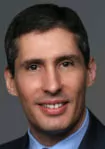Keywords: patent holder, noninfringement, burden of proof
Yesterday, the Supreme Court issued one decision, described below, of interest to the business community.
Patents—Actions Seeking Declaration Of Noninfringement—Burden Of Proof
Medtronic, Inc. v. Mirowski Family Ventures, LLC, No. 12–1128 (previously discussed in the May 20, 2013, Docket Report)
The Supreme Court long ago established that a patent holder making a claim of infringement bears the burden of proof. See Agawam Co. v. Jordan, 7 Wall. 583, 609 (1869). Today, in Medtronic, Inc. v. Mirowski Family Ventures, LLC, No. 12-1128 (January 22, 2104), the Supreme Court held that the burden remains with the patentee even if the patentee is the defendant in a declaratory-judgment action by a patent licensee seeking a judgment of non-infringement. The decision reverses the Federal Circuit's holding two years ago in Medtronic Inc. v. Boston Scientific Corp., 695 F.3d 1266 (Fed. Cir. 2012).
In 1991, Medtronic entered into an agreement (through sublicensors, not relevant here) to license patents held by Mirowski. Under that agreement, as revised in 2006, if Mirowski believed that a new Medtronic product infringed a Mirowski patent, Medtronic could either pay royalties and cure the infringement, or make payments into an escrow account and bring a declaratory-judgment action to challenge the assertion of infringement. Id. An infringement dispute arose in 2007, and Medtronic brought an action for declaratory relief in the District of Delaware, seeking a judgment that its products did not infringe any Mirowski patent and that the patents at issue were not valid.
Medtronic prevailed in the trial court, which held that Mirowski bore the burden of proving that Medtronic had infringed its patent, and that Mirowski had failed to meet that burden. Id. On appeal, the Federal Circuit reversed. While acknowledging the general rule allocating the burden of persuasion to the patentee, and affirming that the burden does not shift merely because the patentee is a defendant in a declaratory-judgment action, the Federal Circuit held that the burden does shift to the party asserting noninfringement in "the limited circumstance when an infringement counterclaim by a patentee is foreclosed by the continued existence of a license." 695 F.3d at 1274.
The Supreme Court disagreed. Citing three underlying legal principles—(1) the default rule that the patentee bears the burden of proving infringement, (2) the fact that the burden of proof is a substantive aspect of a claim, and (3) the rule that declaratory relief is merely a procedural mechanism that does not alter substantive law—the Court concluded that "the burden of proving infringement should remain with the patentee." Slip op. at 6-7. The Court also noted several practical considerations that reinforced its conclusion. First, shifting the burden could result in uncertainty regarding the scope of a patent because a licensee who fails to prove noninfringement still could prevail in an infringement action where the patentee bears the burden of persuasion. Second, placing the burden on the licensee would introduce unnecessary complexity into litigation because the patentee is in a better position to understand the claims in a patent and effectively identify and assert the ways in which a new product might infringe those claims. And finally, shifting the burden to the licensee in a declaratory-judgment action would undermine the purposes of the Declaratory Judgment Act—to "ameliorate the dilemma posed by putting one who challenges a patent's scope to the choice between abandoning his rights or risking suit," slip op. at 8 (internal quotation marks omitted)—by creating a strong disincentive to seeking a declaratory judgment.
The Court also rejected the argument of an amicus that the Federal Circuit lacked jurisdiction under 28 U.S.C. §§ 1295(a)(1) and 1338(a), which together give exclusive appellate jurisdiction to the Federal Circuit for all civil actions arising under "any Act of Congress relating to patents." 28 U.S.C. § 1338(a). In a declaratory-judgment action, questions of jurisdiction are resolved by reference to the coercive action that the defendant could have brought. The amicus argued that Mirowski could not have brought a patent-infringement action, but only an action for breach of contract, and the case thus did not arise under an "Act of Congress relating to patents." Id. at 4. The Court rejected this characterization, holding instead that the threatened action that Medtronic sought to avoid was a suit by Mirowski for infringement. Even if such a suit was unlikely, its availability was sufficient to establish that a "declaratory judgment action, which avoids the threatened action, also 'arises under' federal patent law," thereby creating jurisdiction in the Federal Circuit. Id.
The Court's decision today is significant to both patent holders and licensees because it clarifies that a patentee always bears the burden of proving infringement, even when it is the defendant in a declaratory-judgment action seeking a declaration of noninfringement.
Visit us at mayerbrown.com
Originally published January 21, 2014
Mayer Brown is a global legal services provider comprising legal practices that are separate entities (the "Mayer Brown Practices"). The Mayer Brown Practices are: Mayer Brown LLP and Mayer Brown Europe – Brussels LLP, both limited liability partnerships established in Illinois USA; Mayer Brown International LLP, a limited liability partnership incorporated in England and Wales (authorized and regulated by the Solicitors Regulation Authority and registered in England and Wales number OC 303359); Mayer Brown, a SELAS established in France; Mayer Brown JSM, a Hong Kong partnership and its associated entities in Asia; and Tauil & Chequer Advogados, a Brazilian law partnership with which Mayer Brown is associated. "Mayer Brown" and the Mayer Brown logo are the trademarks of the Mayer Brown Practices in their respective jurisdictions.
© Copyright 2014. The Mayer Brown Practices. All rights reserved.
This Mayer Brown article provides information and comments on legal issues and developments of interest. The foregoing is not a comprehensive treatment of the subject matter covered and is not intended to provide legal advice. Readers should seek specific legal advice before taking any action with respect to the matters discussed herein.

